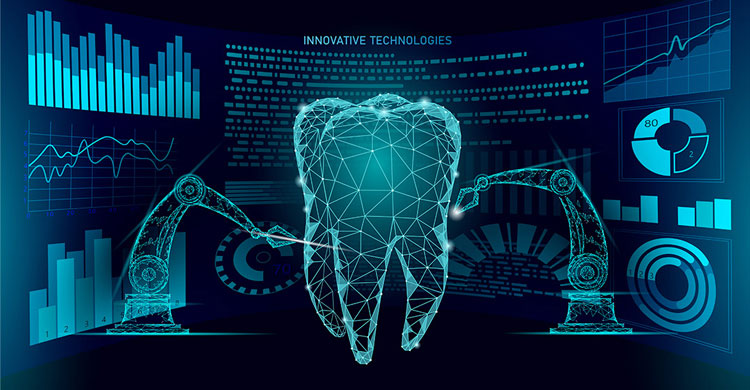
Blog Posts
RECENT BLOG POST


04 Aug 2021


10 Aug 2021


10 Aug 2021


By Dr. Aastha Chandra

18 Oct 2021
NEW TECHNOLOGIES IN DENTISTRY
1. Digital X-Rays: Digital X-rays are faster and contain 90% less radiation than traditional X-rays. When a patient has a digital X-ray done, the image appears on the computer in a matter of seconds. Your dentist can then zoom into the image to better assess and educate the patient regarding their oral health.
2. Intraoral Camera: The intraoral camera is a tool that dentists use to gain precise and well-defined pictures of hard to see places within a patient’s mouth. The camera also allows dentist to show these images to patients while assessing and educating the patient’s needs. This new form of technology allows dentist to conduct a thorough check-up of your mouth and better assess their patient’s oral care needs.
3. Invisalign: Invisalign are clear, practically invisible braces, in the form of computer-generated clear trays, that can gently straighten your teeth. They provide an effective and comfortable way to straighten your smile without the inconvenience of wearing heavy, metal braces. Invisalign braces are easy to take out for cleaning and don’t require a restriction on what type of foods to eat. They get the job done in less time with less hassle.
4. Laser Dentistry: Lasers are used to improve efficiency and eliminate discomfort in numerous dental procedures. Laser dentistry is fast and painless, and can effectively eliminate any form of bacteria during the procedure to avoid any further complications or problems.
5. Dental Implants: Dental implants are screw-replacements for the root portion of missing teeth. Implants are used to restore healthy smiles when patients have missing teeth. Implants are effective because they can replace missing teeth, while still giving the patient the feel and look of a natural tooth.
6. Zoom! Whitening: Zoom! Whitening is a new, state of the art whitening treatment that gives our patients fast and easy results. In just one appointment, Zoom! Whitening can make a significant change in a person’s smile and can make their teeth up to eight shades whiter.
7. Faster Dental Care: CAD CAM Technology-The CAD in this technology stands for “computer-assisted design,” and the CAM for “computer-assisted manufacture.” Together, they translate into fewer dental visits to complete procedures such as crowns and bridges.
Traditionally when a patient needs a crown, a dentist must make a mold of the tooth and fashion a temporary crown, then wait for the dental laboratory to make a permanent one. With CAD/CAM technology, the tooth is drilled to prepare it for the crown and a digital impression is taken with a computer. This image is then relayed to a machine that makes the crown right in the office.
8. Thinner Veneers: Veneers are the thin, custom-made shells that are used to cover the front of crooked or otherwise unattractive teeth. Newer materials and the CAD CAM technology, now make it possible to create even thinner veneers that are just as strong. The advantage of this is that less of the tooth surface must be reduced and more of the natural tooth is kept intact.
9. Better Bonding & Filling Materials: If you’ve chipped a tooth, you can have it fixed to look more natural than it would have in the past, thanks to improvements in bonding material and bonding techniques.
Today’s bonding material is a resin (plastic), which is shinier and longer lasting than the substance used in the past. Because of the wider range of shades available, they can better blend the bonding material to the tooth’s natural colour.
10. New Gum Disease Treatments For Better Dental Health: When the supporting tissue and bone around your teeth doesn’t fit snugly, “pockets” form in the gums. Bacteria then invade these pockets, increasing bone destruction and tooth loss.
A variety of treatments can help reverse the damage. They range from cleaning the root surfaces to remove plaque and tartar to more extreme measures such as gum surgery to reduce the pockets.
In recent years, the focus of gum disease treatment has expanded beyond reducing the pockets and removing the bacteria to include regenerative procedures. For instance, lasers, membranes, bone grafts, or proteins that stimulate tissue growth can be used to help regenerate bone and tissue to combat the gum disease.

